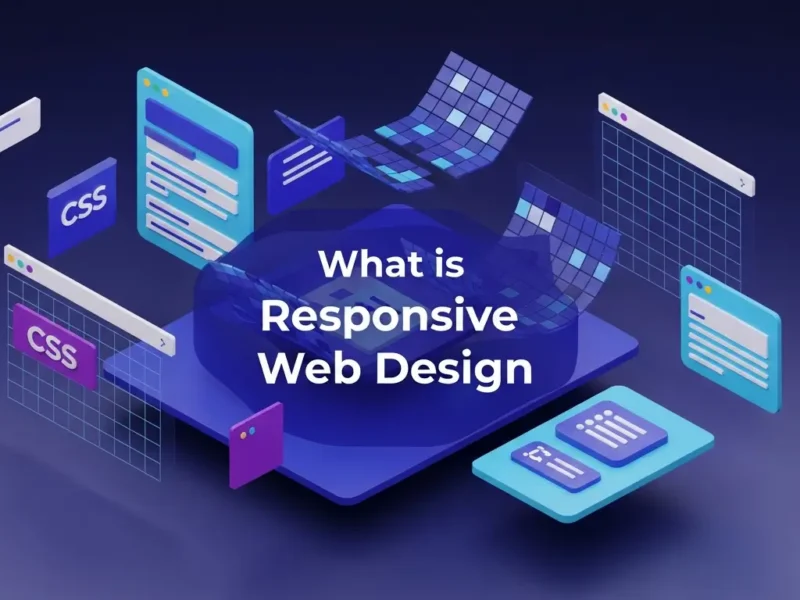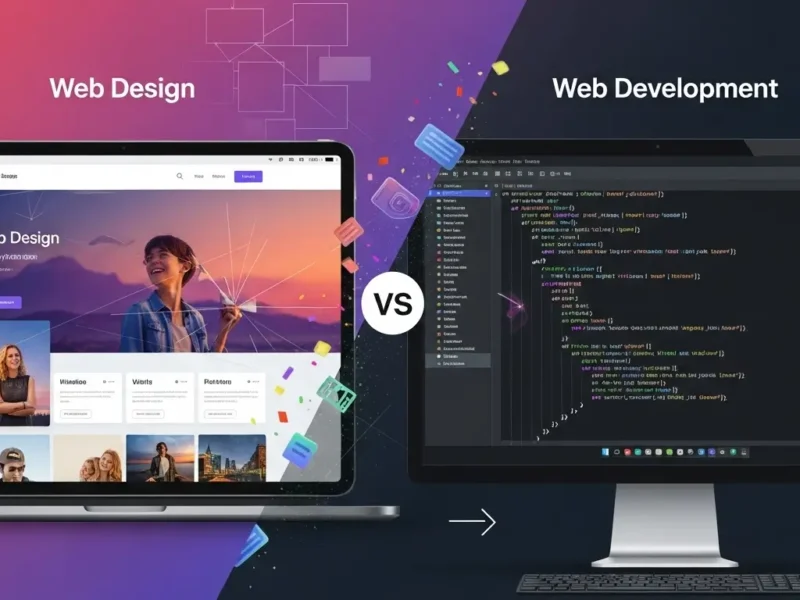The digital landscape is in constant flux, and with it, the world of web design. What looked cutting-edge just a year ago can quickly feel outdated. As we move closer to 2025, understanding the emerging web design trends is crucial for businesses and individuals alike who want to maintain a strong online presence and deliver exceptional user experiences. This article delves deep into the future of web design, exploring the key design trends that are set to shape the internet in the coming year. Whether you’re a seasoned designer, a business owner looking to revamp your website, or simply curious about the evolution of the web, this comprehensive guide will provide valuable insights into the dominating web design trends of 2025. For businesses seeking professional assistance in navigating these evolving trends, high-quality web design services will be more critical than ever to create impactful online experiences.
Immersive Experiences: Beyond the Screen
The demand for more engaging and interactive online experiences is steadily growing. In 2025, we can expect immersive design to move beyond novelty and become a standard expectation.
1. The Rise of Interactive 3D Elements
Forget static images and flat graphics. Interactive 3D elements are poised to take center stage. Imagine product pages where you can rotate and examine items from every angle, or educational websites that allow you to explore complex structures in a dynamic, three-dimensional space. This trend leverages advancements in WebGL and browser capabilities, offering users a richer and more engaging way to interact with content.
- Enhanced Product Visualization: E-commerce will greatly benefit from interactive 3D, allowing customers to experience products virtually before making a purchase, reducing returns and increasing satisfaction.
- Engaging Educational Content: Complex concepts in science, history, and other fields can be brought to life through interactive 3D models, making learning more accessible and captivating.
- Unique Brand Experiences: Businesses can use interactive 3D elements to create memorable and distinctive brand experiences that set them apart from the competition.
2. Micro-Interactions and Subtle Animations
While grand immersive experiences are captivating, the power of subtle details shouldn’t be underestimated. Micro-interactions – small animations and feedback cues that occur when a user interacts with an element – will continue to refine the user experience in 2025. These tiny moments of delight can make interfaces feel more responsive, intuitive, and human-centered.
- Improved Navigation: Subtle animations on hover states or button clicks provide clear visual feedback, guiding users through the website.
- Enhanced Engagement: Liking a post, submitting a form, or adding an item to a cart can be made more satisfying with well-designed micro-interactions.
- Increased Usability: Micro-animations can draw attention to important information or guide users through complex processes step by step.
3. Enhanced Accessibility Features
Websites that adhere to WCAG (Web Content Accessibility Guidelines) will be crucial. This includes:
- Improved Semantic HTML: Using HTML5 elements correctly to structure content logically for screen readers and other assistive technologies.
- Clear and Sufficient Color Contrast: Ensuring that text and interactive elements have enough contrast to be easily readable for users with visual impairments.
- Keyboard Navigation: Making sure all website functionalities can be accessed using a keyboard alone, catering to users who cannot use a mouse.
- Alternative Text for Images and Media: Providing descriptive alt text for images and transcripts or captions for videos and audio content.
4. Designing for Diverse User Needs
Beyond technical accessibility, inclusive design also considers the diverse needs and preferences of users. This includes:
- Personalization Options: Allowing users to customize aspects of the website, such as font size, color schemes, and content display.
- Multilingual Support: Providing content in multiple languages to cater to a global audience.
- Consideration of Cognitive Differences: Designing interfaces that are clear, concise, and easy to understand for users with cognitive disabilities.
5. Continued Embrace of Minimalism and Clean Design
Minimalist web design, characterized by ample white space, simple typography, and a focus on essential content, will remain a dominant trend. Its benefits include improved loading speeds, enhanced readability, and a focus on the core message.
- Focus on Content: Minimalism allows the content to take center stage without visual clutter.
- Improved Performance: Fewer design elements often translate to faster loading times, crucial for user experience and SEO.
- Timeless Aesthetic: Clean and simple designs tend to age well and feel consistently modern.
6. The Rise of Bold Typography and Expressive Colors
On the other end of the spectrum, we’ll see a rise in bold typography and expressive color palettes. This trend allows brands to make strong visual statements and create memorable identities.
- Impactful Headlines: Large, striking fonts will be used to grab attention and convey key messages.
- Emotional Connection: Vibrant and unconventional color combinations can evoke specific emotions and create a unique brand feel.
- Visual Hierarchy: Bold typography can effectively establish a clear visual hierarchy, guiding the user’s eye through the content.
7. Prioritizing Core Web Vitals and Performance
Website performance is no longer just a technical consideration; it’s a critical factor in user experience and SEO ranking. Google’s Core Web Vitals – Largest Contentful Paint (LCP), First Input Delay (FID), and Cumulative Layout Shift (CLS) – will continue to be paramount. Designers and developers will need to optimize websites for speed, responsiveness, and visual stability.
- Faster Loading Times: Optimizing images, leveraging caching, and using efficient code will be essential for a smooth user experience.
- Improved Responsiveness: Websites must adapt seamlessly to different screen sizes and devices.
- Reduced Layout Shifts: Ensuring that elements on the page don’t unexpectedly move during loading, preventing frustrating user interactions.
8. The Integration of AI and Machine Learning
Artificial intelligence (AI) and machine learning (ML) are increasingly being integrated into web design and development, offering new possibilities for personalization and automation.
- Personalized Content Recommendations: AI can analyze user behavior to suggest relevant content, products, or services.
- Intelligent Chatbots: AI-powered chatbots can provide instant customer support and answer frequently asked questions.
- Automated Design Processes: AI tools are emerging that can assist with tasks like image optimization, content generation, and even layout suggestions.
9. Fluid and Adaptive Layouts
The focus will shift from simply adapting to different screen sizes to creating fluid and adaptive layouts that respond intelligently to the specific characteristics of each device. This goes beyond breakpoints and involves designing flexible elements and content that reflow and reorganize seamlessly.
- Optimized for Every Context: Websites will adapt not just to screen size but also to input methods (touch, mouse, keyboard) and device capabilities.
- Consistent User Experience: Regardless of the device used, the core user experience and brand identity will remain consistent.
10. Progressive Web Apps (PWAs) for Enhanced Mobile Experience
Progressive Web Apps (PWAs) will continue to gain traction, blurring the lines between websites and native mobile applications. PWAs offer features like offline access, push notifications, and home screen installation, providing a more app-like experience within the browser.
- Improved Engagement: Push notifications can re-engage users and keep them informed.
- Offline Functionality: PWAs can provide access to content even when users are offline.
- Faster Performance: PWAs often load faster than traditional websites on mobile devices.
11. Engaging Visual Narratives
Websites will increasingly use visuals – including photography, illustration, and video – to tell compelling stories and create emotional connections with their audience.
- Brand Storytelling: Visuals can effectively communicate a brand’s history, values, and mission.
- Emotional Resonance: Evocative imagery and videos can create a stronger emotional impact than text alone.
- Increased Engagement: Engaging visual narratives can hold users’ attention and encourage them to explore further.
12. Authentic and Human-Centered Design
There will be a move away from overly polished and generic stock imagery towards more authentic and human-centered design. This includes using genuine photography of real people, showcasing diverse perspectives, and creating designs that feel relatable and trustworthy.
- Building Trust: Authentic visuals can help build trust and credibility with the audience.
- Creating Connection: Human-centered design fosters a sense of connection and empathy.
- Enhancing Brand Personality: Genuine visuals can help to showcase a brand’s unique personality and values.
Looking Ahead: The Future of Web Design
The web design trends we’ve explored for 2025 point towards a future where the internet is more immersive, accessible, performant, and human-centered. Designers and developers who embrace these trends will be well-positioned to create compelling online experiences that resonate with users and achieve business goals.
Key Takeaways for 2025 Web Design:
- Embrace Immersive Technologies: Explore the potential of interactive 3D and subtle animations.
- Prioritize Accessibility and Inclusivity: Design for everyone, ensuring your website is usable by all.
- Balance Minimalism and Boldness: Choose an aesthetic that aligns with your brand and resonates with your audience.
- Focus on Performance: Optimize your website for speed and responsiveness.
- Leverage AI and ML: Explore how these technologies can enhance user experience and automate tasks.
- Think Beyond Mobile-First: Create truly seamless experiences across all devices.
- Tell Your Story Visually: Use engaging visuals to connect with your audience on an emotional level.
- Stay Authentic and Human-Centered: Build trust through genuine and relatable design.
By understanding and implementing these web design trends, you can ensure your online presence remains relevant, engaging, and effective in the years to come. The future of web design is dynamic and exciting, offering endless possibilities for creativity and innovation.
Ready to Future-Proof Your Website?
Don’t let your website fall behind the curve. Embrace the dominating web design trends of 2025 and create an online experience that truly stands out. Contact our expert web design team today for a consultation and discover how we can help you build a website that is not only visually stunning but also performs flawlessly and connects with your audience on a deeper level. Let’s shape the future of your online presence together!



